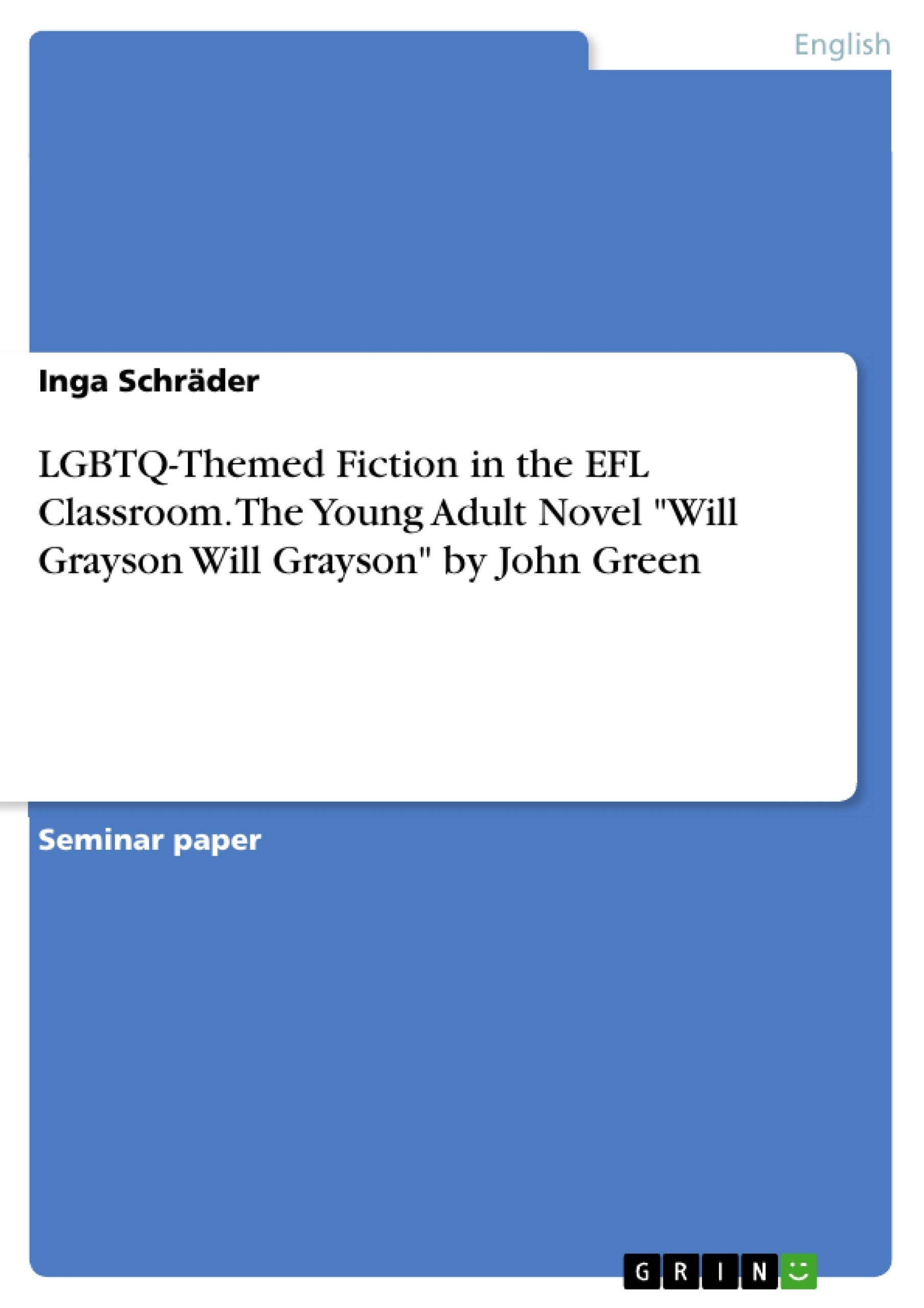The level of tolerance towards all types of Otherness has increased during the past years, there is still discrimination against anything other than heterosexuality. Especially in schools, sexual and gender differences are seldom addressed and if, they are presented as deviant sexual behaviour. Teachers often lack professional competences and they even resist to address LGBTQ issues. As a consequence, homophobia and heterosexism are present in many classrooms which can affect both learning and teaching negatively.
The problem of heterosexism is also related to the foreign language classroom. Both in coursebooks as well as in literature students are often confronted with heteronormative representations and characters. Placing emphasis on this problem, I will take the LGBTQ-themed young adult novel Will Grayson Will Grayson by David Levithan and John Green into consideration and aim to prove that this novel is a good way to challenge students believes and perspectives about sexual and gender differences and to counter and normalize homophobia in the English as a Foreign Language (EFL) classroom. To achieve this goal, I have organized my term paper into three main sections, each having two subsections.
Table of Contents
- Introduction
- Dealing with Otherness and Queer Perspectives in the EFL Classroom
- Queer Theory in Foreign Language Teaching
- LGBTQ-Themed Young Adult Literature in the EFL Classroom
- David Levithan's and John Green's Will Grayson Will Grayson - Queer Potential?
- The Characters
- Teaching Implications
- Applying Will Grayson Will Grayson to the EFL Classroom
- Fremdverstehen through Creative Methods
- Possible Tasks
- Conclusion
Objectives and Key Themes
This term paper aims to demonstrate the effectiveness of using the LGBTQ-themed young adult novel "Will Grayson Will Grayson" by David Levithan and John Green in the EFL classroom to challenge students' beliefs and perspectives about sexual and gender differences. By analyzing the novel's characters and themes, the paper explores how it can counter and normalize homophobia, ultimately contributing to a more inclusive and accepting learning environment.
- The importance of addressing LGBTQ issues in the EFL classroom to combat heterosexism and foster inclusivity.
- The potential of LGBTQ-themed young adult literature to challenge heteronormative assumptions and promote understanding.
- The application of queer theory in foreign language teaching to deconstruct heteronormativity and make non-heteronormative identities visible.
- The role of Fremdverstehen (understanding others) and creative methods in fostering empathy and critical thinking among EFL learners.
- The use of "Will Grayson Will Grayson" as a valuable tool for promoting dialogue and reflection on LGBTQ issues in the EFL classroom.
Chapter Summaries
The term paper begins by examining the role of "otherness" and queer perspectives in the EFL classroom, highlighting the need to address LGBTQ issues that have often been overlooked in TEFL discourse. It then delves into the concepts of queer theory and its relevance to foreign language teaching, emphasizing its potential to deconstruct heteronormativity and challenge dominant cultural patterns.
The paper further explores the specific features of LGBTQ-themed young adult literature and its potential to engage EFL learners in meaningful discussions about sexual and gender diversity. It analyzes the characters and themes of "Will Grayson Will Grayson," highlighting its potential to challenge students' beliefs and perspectives about LGBTQ identities.
The paper then moves on to discuss the concept of Fremdverstehen (understanding others) and its role in fostering empathy and critical thinking among EFL learners. It presents various creative methods and tasks that can be applied to the novel "Will Grayson Will Grayson" to promote engagement and critical reflection on LGBTQ issues.
Keywords
The key themes of this term paper revolve around inclusivity, LGBTQ representation, queer theory, heteronormativity, young adult literature, Fremdverstehen, and creative teaching methods for the EFL classroom. These topics are crucial for fostering a more open and accepting learning environment where students can engage with diverse perspectives and challenge societal norms.
- Quote paper
- Inga Schräder (Author), 2018, LGBTQ-Themed Fiction in the EFL Classroom. The Young Adult Novel "Will Grayson Will Grayson" by John Green, Munich, GRIN Verlag, https://www.grin.com/document/437499



